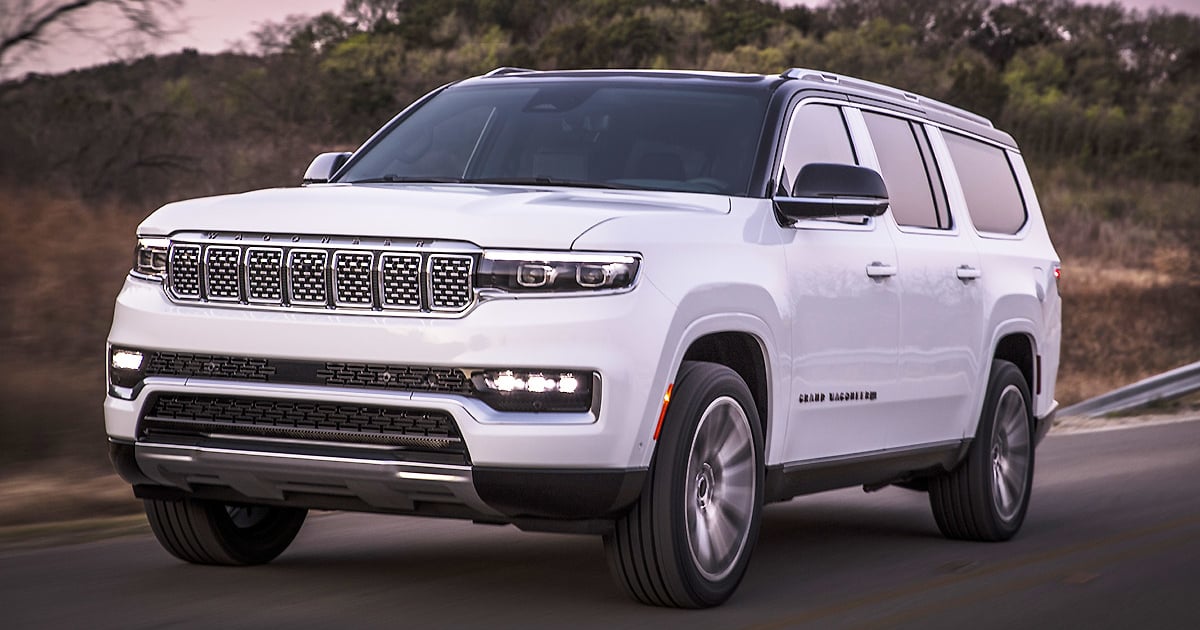
A sharp rise in incentives at some brands amid the industry’s ongoing inventory recovery fueled a jump in U.S. light-vehicle sales last month.
Deliveries rose 21 percent to around 720,000 vehicles for the seven automakers that report monthly figures. American Honda was among the big winners, notching a 58 percent gain, while Subaru of America posted a 28 percent increase.
May marked the industry’s 10th consecutive monthly sales increase, according to LMC Automotive, as it continues to bounce back from supply chain challenges that dogged automakers last year.
The latest results were helped by favorable year-earlier comparisons, when the inventory shortage was at its worst. Retail inventory entered June at around 1.3 million vehicles, up 48 percent from a year earlier, according to estimates from J.D. Power and LMC Automotive.
“Vehicle shoppers now have a much better chance of finding something that fits their needs,” Charlie Chesbrough, Cox Automotive senior economist, said in a statement. “Pent-up demand, held back by limited product availability last year, is now being fulfilled as inventory levels improve around the country.”
The seasonally adjusted annualized selling rate came in at 15.1 million vehicles for May, according to Motor Intelligence, down from 16.15 million in April but up sharply from 12.73 million vehicles the previous May, which marked 2022’s slowest sales pace.
Rising inventories also have led to more generous showroom deals.
Volkswagen incentives rose significantly year over year, quadrupling to $2,048 per vehicle, according to Motor Intelligence. Jeep had the highest incentives at $3,428 per vehicle, nearly triple what it offered this time last year.
Ford, Hyundai, Buick and Honda also saw a big jump in incentive outlays.
TrueCar estimated incentives averaged $1,931 last month, up 13 percent over April and 64 percent over May 2022.
Deals included Chevrolet offering 1.9 percent financing on select crossovers and SUVs for qualified buyers working through GM Financial, with payments waived for 90 days. Some Stellantis dealers offered as much as $12,000 off a Jeep Grand Wagoneer.
J.D. Power and LMC Automotive said discounts on leased vehicles have risen significantly in recent months, with leasing expected to account for 21 percent of retail sales in May, up significantly from a low of 16 percent in September 2022. That would still fall short of May 2019, when leased vehicles made up nearly 30 percent of new-car retail sales.
Results for automakers reporting monthly are another sign that pent-up demand remains strong despite rising interest rates.
Three core Honda models — Accord, up 81 percent; Civic, up 98 percent; and CR-V, up 95 percent — helped the automaker achieve that 58 percent increase last month, with Honda division volume rising 53 percent and Acura up 112 percent. May marked American Honda’s third straight monthly increase after a stretch of declines prompted by severe inventory shortages tied to tight microchip supplies and shipping woes.
Sales of electrified models set a Honda brand monthly record of more than 32,000 vehicles in May, according to the Honda division.
The Honda brand ended May with 34,000 vehicles on the ground, up from 12,000 a year earlier, while Acura had about 21,000 vehicles in stock, up from 4,000 at the start of June 2022.
Toyota Motor North America saw sales rise 6.4 percent to 187,205 vehicles in May, with the Toyota brand up 3.7 percent and Lexus up 25 percent. Light trucks, with an 11 percent gain, provided a major lift for the Toyota brand, offsetting an 8.9 percent decline for cars.
The automaker said it ended May with 153,742 Toyota and Lexus models in stock, 27,255 at dealerships and the rest in ports or in transit.
Ford Motor Co.’s May U.S. sales rose 11 percent. The Ford brand was up 12 percent with Lincoln down 14 percent. Led by a 43 percent increase in F-Series volume, Ford’s overall pickup deliveries rose 33 percent last month.
Ford brand sales have climbed for six straight months, while Lincoln volume has dropped for three straight months.
Ford said it ended May with gross stocks of 383,000 vehicles, including medium and heavy-duty trucks.
Despite the continued recovery, some analysts said the rest of 2023 could pose challenges.
Cox Automotive said a slowdown in the second half of the year is expected as rising interest rates and other economic headwinds persist. Still, higher incentives and more fleet volume will help support overall figures.
S&P Global Mobility doesn’t expect volumes to deviate from the current trend over the next few months but noted that affordability issues could threaten additional growth.
“Potential upside to immediate term sales remains as inventory levels progress,” Chris Hopson, principal analyst at S&P Global Mobility, said in a statement. “However, gathering economic headwinds point to some volatility come the second half of the year.”
Jeff Schuster, executive vice president and automotive group head at GlobalData, said wild cards that could affect sales include a potential UAW strike during contract negotiations this fall and the possibility of recession.
“While we are still concerned that the recovery could lose momentum as pent-up demand is satisfied,” he said, “there is growing optimism that the U.S. market will continue to outperform expectations through the summer months.”